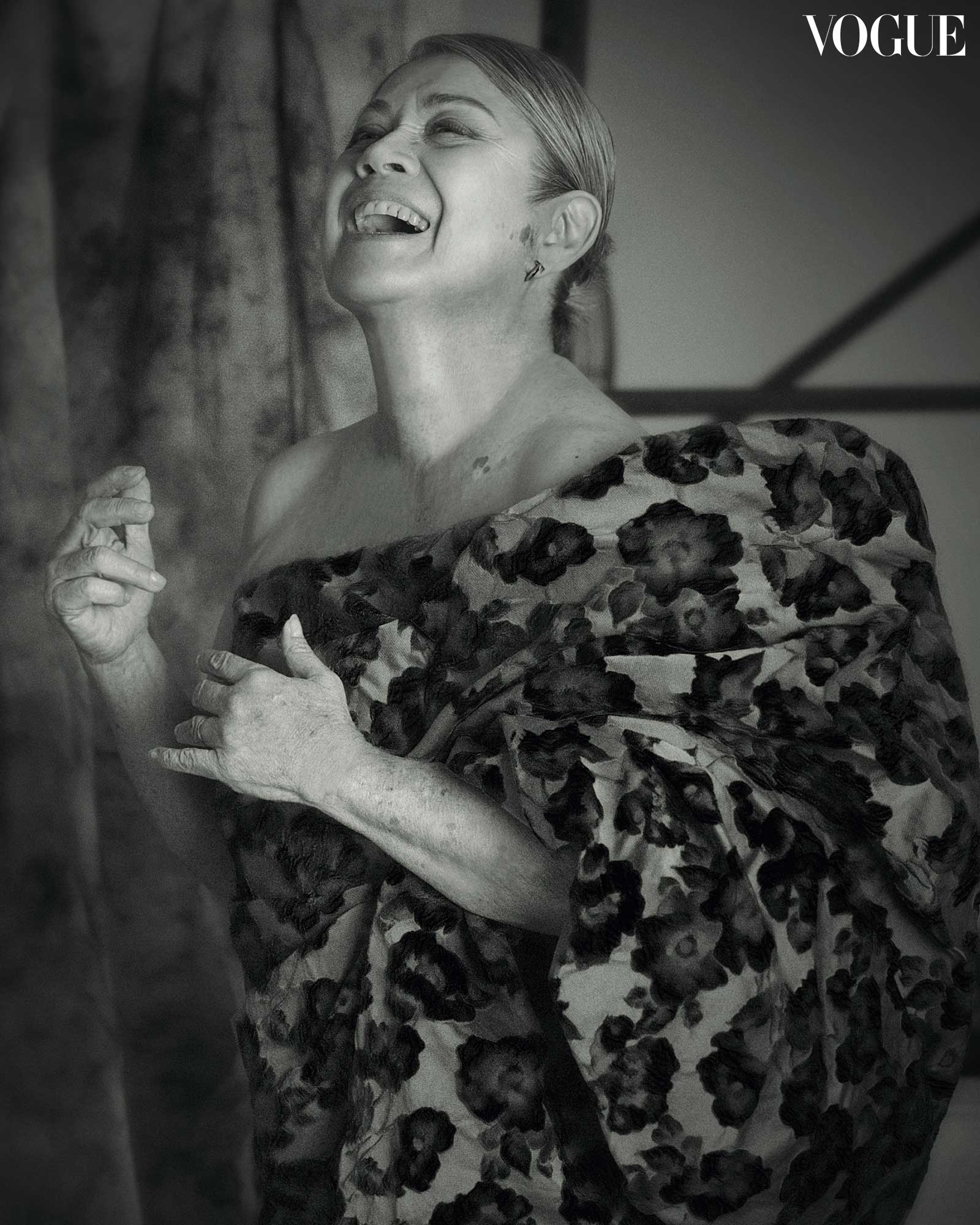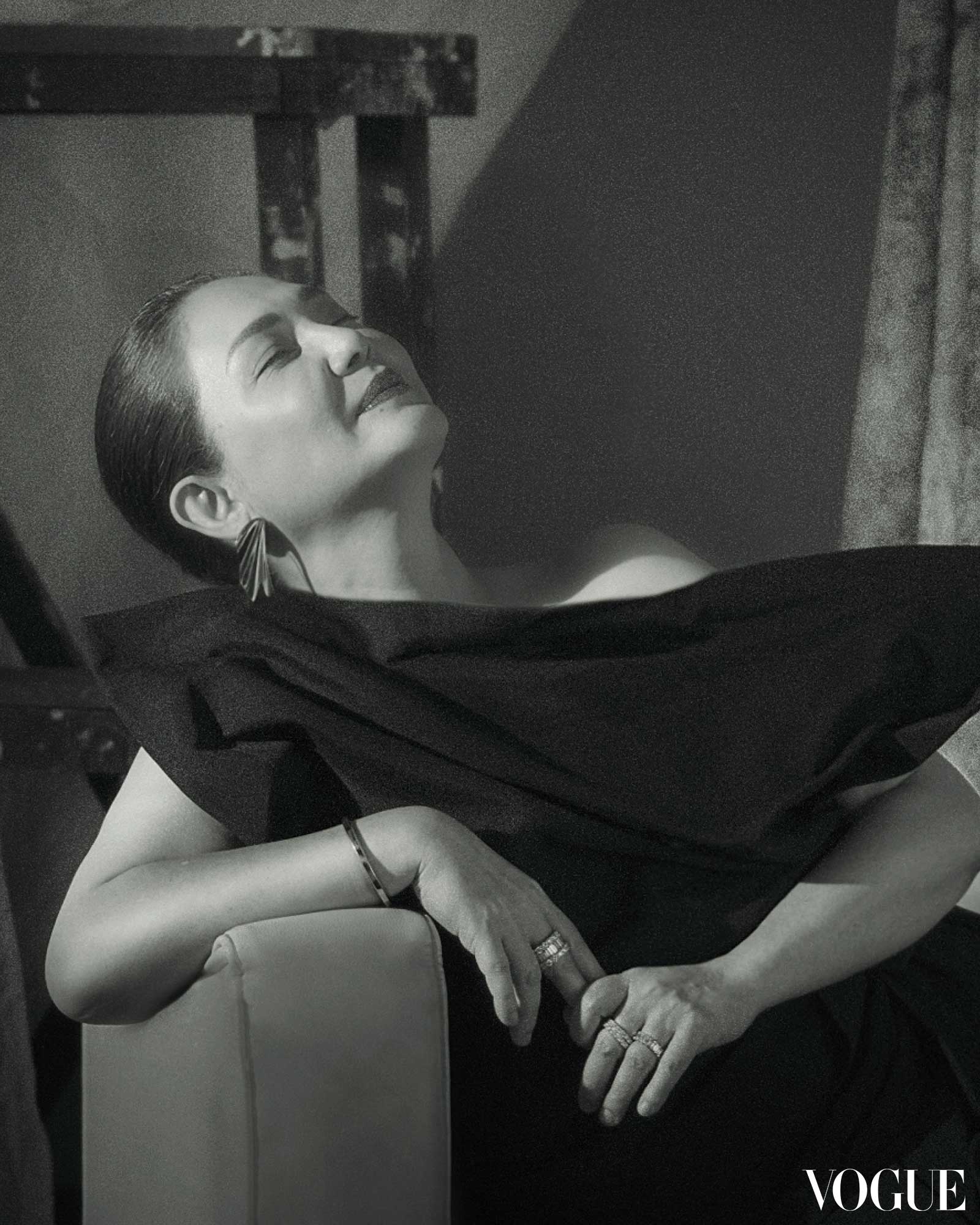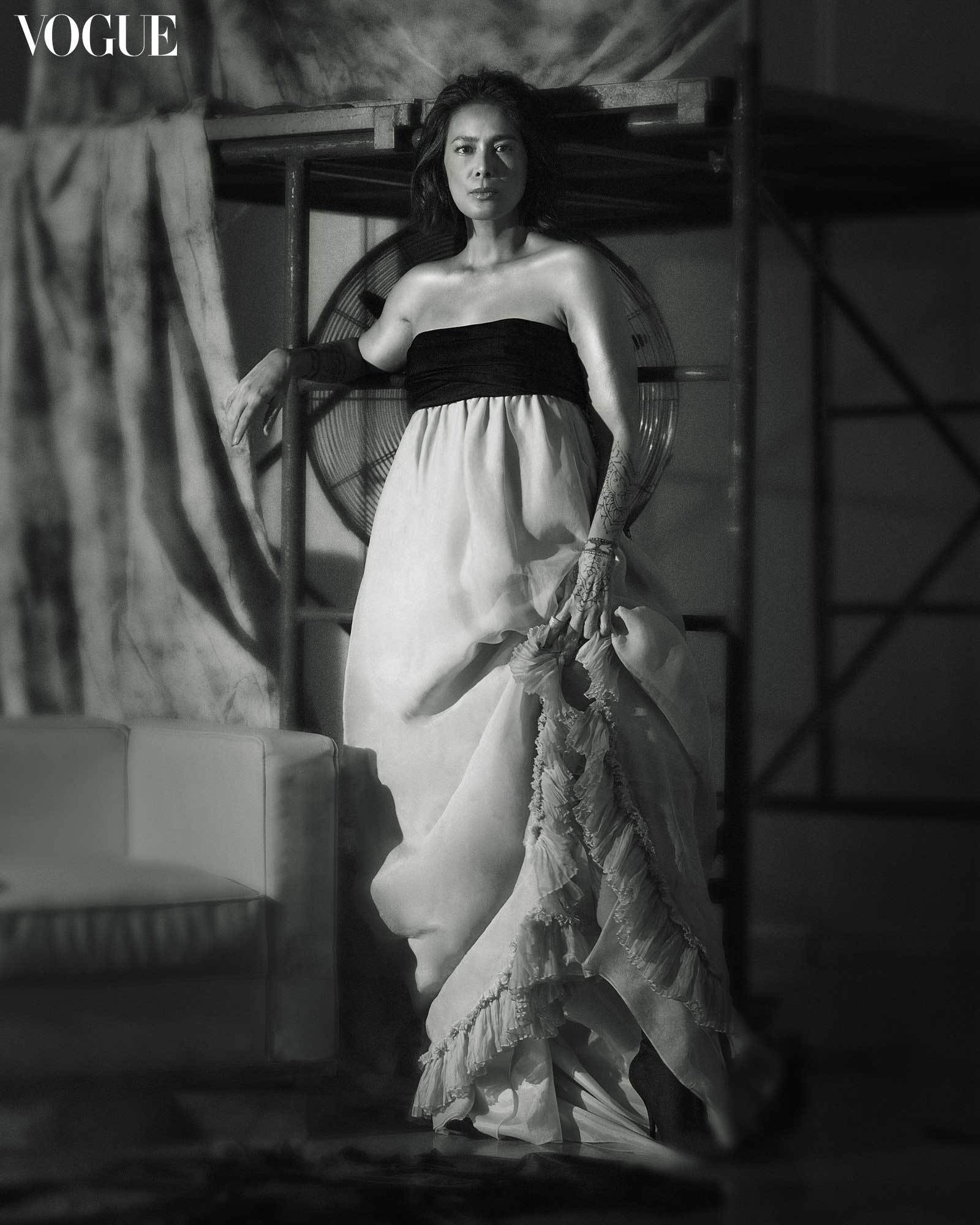“‘Yung times ng Nora and Vilma, kung ‘di ka magaling, ‘di ka puwede mag artista. Dapat, pag action, magaling ka!” Alessandra de Rossi wears MARK BUMGARNER dress, PRADA shoes. Photographed by Neal Oshima for the August 2024 Issue of Vogue Philippines
These five women remain models for a healthy career in a complex, often unforgiving industry, stars that never burned out.
It is very difficult to sum up the careers of the five women we celebrate here, representing over six decades of work on Filipino screens—both in cinemas and on televisions. The youngest among them, Alessandra de Rossi, has been working in the industry for over twenty years, and she’s taken on many different roles in front of and behind the camera. There is much to say about each of them, much that they have accomplished in each of their storied careers.
Perhaps it is easier to take a much wider view: how each of them represents a different era of the surreal world of the Filipino entertainment industry; how their varying backgrounds and journeys represent the changing tastes and values of the Filipino viewer over the decades.

It is the sixties, just past the first golden age of Filipino Cinema, and the industry was producing genre fare at the behest of its two biggest stars: Dolphy and FPJ. And the industry needed actresses who could play in those waters, and with her natural comedic chops Nova Villa just seemed to fit the role. Plucked out of college by FPJ, a 17-year-old Villa would star in five films in 1964, one of them opposite Dolphy in Sa Daigdig ng Fantasia, a massive production that had them traveling with a boy scout troop to a world filled with magical creatures. She would become a mainstay in comedy, anchoring several sitcoms through the seventies and eighties.

Gina Alajar was a child star in the seventies, and was growing up in the industry just as it was making its next shift under the likes of Lino Brocka, Ishamael Bernal, Mike de Leon, and Marilou Diaz-Abaya. Alajar always seemed to fit neatly into the complex human dramas of the filmmakers of the second golden age, expressing an openness to acting out the darker side of human experience, and displaying an understanding of the way people navigate difficult situations. These were activist films that called for an activist actor, and Alajar answered the call with gusto.

Maricel Soriano was also a child star in the seventies, but was swept up by a very different movement in Filipino cinema: she was a Regal baby, and was paired with William Martinez in a series of light romantic films that thrilled audiences through the eighties. Soriano shaped up to be a very different kind of star: an entertainment juggernaut who could do anything that was asked of her. This kind of versatility defined an era of television. The industry would capitalize on this by giving Soriano her own anthology series, The Maricel Regal Drama Series, where the actress could be cast in different roles, a variety of stories.

Angel Aquino entered the industry as a model in the image-obsessed nineties, with Butch Perez deciding that her unique beauty deserved to be put up on the silver screen. And for a while, it felt like the industry wasn’t set on treating her like an actress: she was an attraction, a gorgeous face to put into a supporting role. She was given a television host job before making her cinematic breakthrough in Chito Roño’s Laro sa Baga, in the kind of role that is often referred to as ‘daring’ by the local entertainment press. And now, nobody questions the chops of Aquino, who has generously given a lot of her time to the independent movement that grew out of the shift to digital in the last fifteen to twenty years.
But if we’re just talking about the local independent scene, we have to talk about Alessandra de Rossi. She first worked with Raya Martin and Adolfo Alix Jr. in 2009, and would then go on to star in many of the films produced by the likes of Cinemalaya, Cinema One Originals, and Sinag Maynila, the grant-giving festivals that were the lifeblood of the burgeoning independent cinema scene at the time. De Rossi seemed to embody independence, forging her own path through the industry and eventually finding mainstream success with Kita Kita, a film directed by Sigrid Andrea Bernardo, who herself cut her teeth in the festivals. In her career, De Rossi has recorded an album, written and directed her own films, and just seems prone to exploring different avenues to expressing everything that is inside her.
“So, there’s not one medium that will be effective for everybody. It’s really different. You have to find your voice, you have to find your technique, you have to find what works for you.”
– Angel Aquino
What’s common between these women is that they stuck it out. The industry moves in waves, the tastes of both producers and audiences fickle and unpredictable. But they remain fixtures in the entertainment landscape, always finding their place in it, moving along with those waves. In the interviews, there’s more than one mention of the importance of being easy to work with, of being nice to the people around them. This is probably a part of the equation of longevity in the industry, but let’s not discount just how talented these women are, and how they’ve continuously worked on their craft, evolving as times change.
It’s tough to say what an aspiring actress has to do these days to make it to their level. The industry today is nothing like what these women encountered when they were starting out. There are new concerns for a current star-to-be, like the ubiquity of social media, and the pared-down existence of one of the larger producers in the country. Still, these women remain models for a healthy career in this complex, often unforgiving industry. They are the stars that never burned out, sharing their light through decades of tumult, guiding us through the darkness.
By PHILBERT DY. Photographs by NEAL OSHIMA. Beauty Editor: JOYCE OREÑA. Fashion Director: PAM QUIÑONES. Makeup: Zidjian Paul Floro. Hair: Patty Inojales. Art Director: Jann Pascua, Gabbi Constantino. Production Design: Migs Alcid. Producer: Bianca Zaragoza. Beauty Writer: Bianca Custodio. Talent Coordinator: Tang Adriano. Photographer’s Assistant: Jack Kapuno. Production Assistants: Divine Lorenzo, Franky Tan. Makeup Assistant: Godwin Dela Serna. Hair Assistant: Jeremi Lang. Stylist’s Assistants: Anya Granados, Kyla Chuasiaokong. Production Design Assistans: Alex Baroña, Mariz Fetalvero, Vienna Bleza

